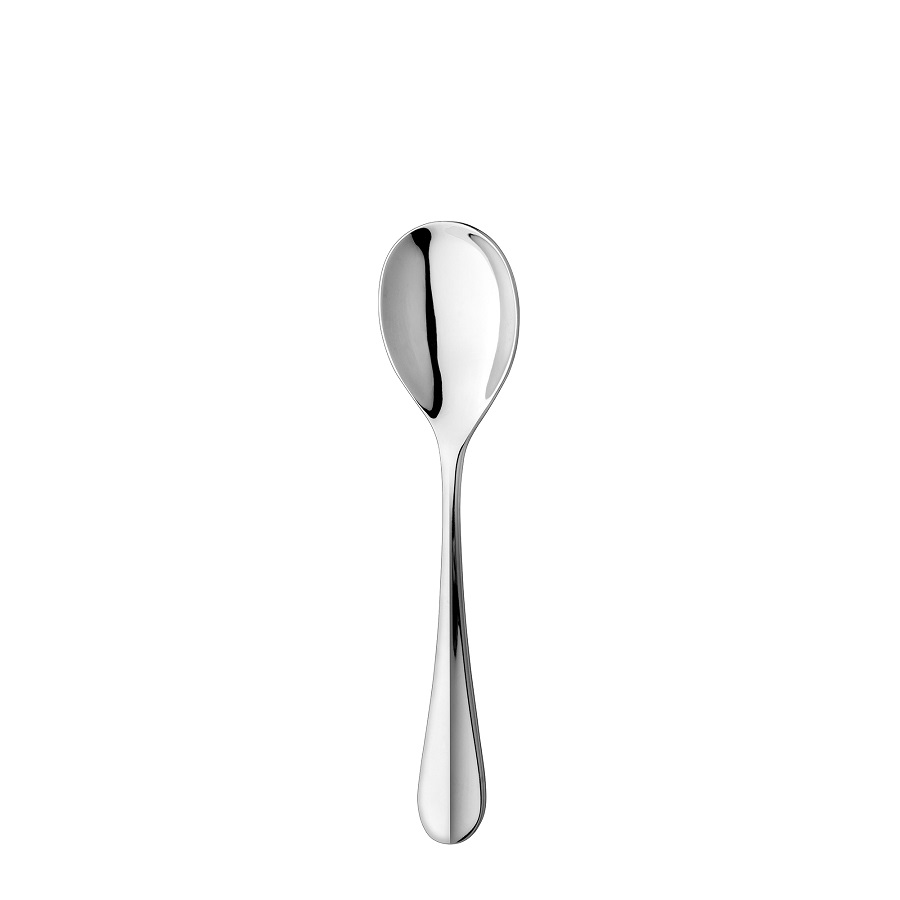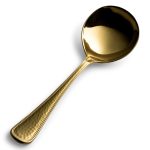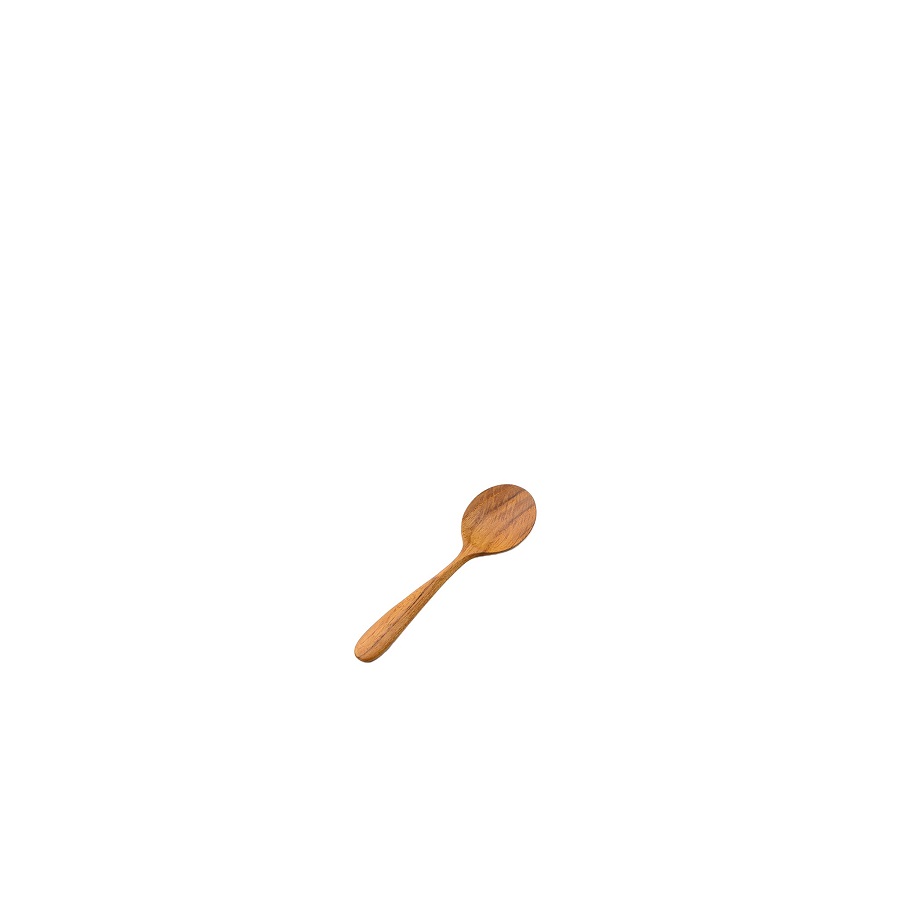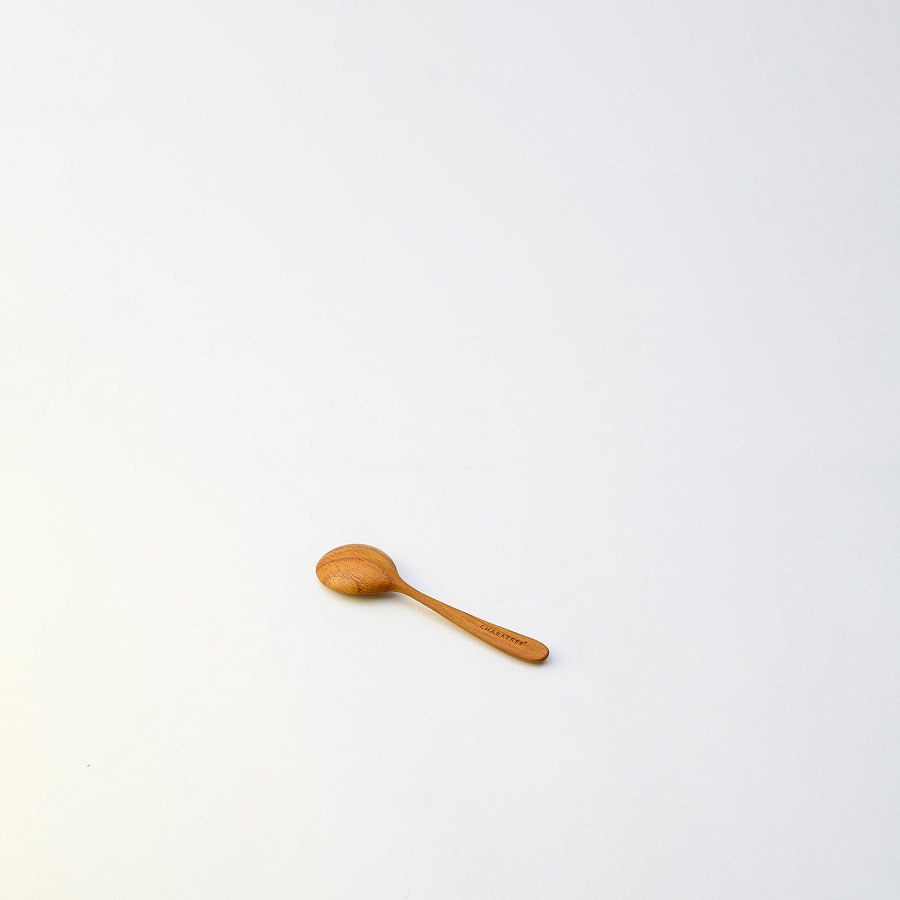Introduction
Bouillon spoons, with their unique design and elegant curves, hold a special place in the world of fine dining. Often underestimated and overlooked, these spoons are versatile utensils that add an element of sophistication to the dining experience. In this exploration, we delve into the various roles bouillon spoons play in fine dining, showcasing their versatility beyond their traditional use for serving clear soups or bouillons.

The Traditional Role: Soup Service
The most recognized use of bouillon spoons is, undoubtedly, for enjoying broths and light soups. Their rounded bowls, slightly smaller than those of regular soup spoons, are designed to capture the delicate flavors and aromas without overwhelming the palate with too large a mouthful. This makes them perfect for sipping consommés, bouillons, and clear soups where every subtle nuance of flavor is intended to be appreciated. The elongated handles ensure a comfortable grip, allowing diners to enjoy their soup with grace and ease.
Delicate Sauces and Accompaniments
Moving beyond soups, bouillon spoons excel in presenting and consuming delicate sauces and accompaniments. Whether it’s a velvety hollandaise sauce drizzled over poached eggs at a brunch setting or a small portion of creamy mushroom sauce served alongside a perfectly cooked filet, the spoon’s shape elegantly holds just enough sauce for a balanced taste without overpowering the main dish. Its size encourages savoring each individual component of the meal separately, enhancing the overall dining experience.
Appetizers and Amuse-Bouches
In the realm of fine dining, where presentation is paramount, bouillon spoons offer a creative platform for serving appetizers and amuse-bouches. Miniature portions of ceviche, tartare, or even a single oyster on the half shell can be beautifully presented on these spoons, turning each bite into a work of art. The compact nature of the spoon allows chefs to showcase intricate flavors and textures in a single, exquisite mouthful, engaging guests right from the start of the meal.
Desserts and Petit Fours
Not limited to savory courses, bouillon spoons also find their way into the dessert course, particularly for serving petite desserts and mousse-like creations. From a quenelle of chocolate mousse to a delicate panna cotta garnished with a raspberry, these spoons cradle delicate sweets, ensuring each spoonful is a delightful balance of flavor and texture. Their design promotes an intentional, slowed-down pace of eating, encouraging diners to relish every last bite.
Cocktail and Beverage Garnishes
Innovative mixologists have even adopted bouillon spoons as tools for creative cocktail presentations. A spoonful of sorbet floating atop a champagne flute or a cube of frozen fruit in a summer cocktail not only enhances the drink visually but also gradually infuses flavors as it melts, elevating the drinking experience. These spoons add a touch of luxury and refinement to beverage service, making each sip a multi-sensory adventure.


Understanding the Bouillon Spoon
Before diving into the selection process, it’s crucial to understand what distinguishes a bouillon spoon from other spoons. Typically smaller than a traditional soup spoon but larger than a teaspoon, a bouillon spoon features a round, shallow bowl perfect for sipping clear liquids like consommé or bouillon without overwhelming the mouthful. Its size and shape also make it suitable for enjoying desserts, sauces, and side dishes.
Material Matters
- Stainless Steel: Durable, easy to clean, and resistant to corrosion, stainless steel bouillon spoons are a popular choice for their practicality and affordability. They offer a classic, sleek look that complements most dinnerware styles.
- Silver or Silver-Plated: For a touch of elegance, silver or silver-plated spoons add a sense of luxury to any table setting. While they require more maintenance to prevent tarnishing, their timeless beauty is hard to match.
- Ceramic: If you’re looking to add a pop of color or unique design, ceramic spoons offer artistic flair. However, they may be less durable and require gentle handling.
- Porcelain or China: Delicate and often adorned with intricate patterns, porcelain or china spoons elevate formal settings. They are best suited for special occasions due to their fragile nature.
Design Considerations
- Handle Design: Look for handles that are comfortable to hold and balanced, ensuring ease of use. Some designs may feature ornate detailing, while others opt for simplicity.
- Bowl Shape and Depth: The depth of the spoon bowl can vary; a shallower bowl is ideal for sipping liquids, while a slightly deeper one might accommodate thicker soups or small bites.
- Integration with Existing Cutlery: Consider how the bouillon spoon will blend with your existing cutlery set. Matching finishes and designs create a cohesive look.
Ergonomics and Functionality
The weight and balance of the spoon play a crucial role in user comfort. A well-balanced spoon reduces hand fatigue during meals, especially when enjoying multiple courses. Handles with a slight curve or indentations can enhance grip, making them easier to handle for all ages.
Aesthetic Appeal and Personal Style
Your choice of bouillon spoon should reflect your personal taste and the ambiance you wish to create. Whether you prefer a minimalist, modern aesthetic or a vintage, ornate style, there’s a design to suit every preference. Consider the spoon’s role in enhancing the overall dining experience, from casual family dinners to sophisticated dinner parties.
Maintenance and Durability
Think about the effort required to maintain your chosen spoon. Stainless steel and some synthetic materials are dishwasher safe and low-maintenance, whereas silver or delicate ceramics may require hand washing and careful storage to preserve their integrity.
Budget and Value
Lastly, consider your budget. High-quality spoons can be an investment, especially if opting for premium materials or artisanal designs. Determine how much you’re willing to spend and weigh this against the frequency of use and the value it adds to your dining experience.

A Brief History of the Bouillon Spoon
The origins of the bouillon spoon can be traced back to the evolution of dining etiquette and the refinement of European cuisine during the 18th and 19th centuries. Named after bouillon, a clear, flavorful broth made from simmering meat and vegetables, this specialized spoon was designed to enhance the dining experience of consuming liquid-based dishes. Its design, typically characterized by a smaller bowl compared to a traditional soup spoon and a handle that is often shorter and more rounded, reflects a consideration for both functionality and grace.
The Functional Beauty of Design
One of the key features that distinguish a bouillon spoon is its size. The compact bowl allows for a perfect mouthful of delicate broths or intense sauces without overwhelming the palate. This design encourages savoring each spoonful, enhancing the appreciation of the nuanced flavors and textures crafted by the chef. Moreover, the slightly curved shape of the spoon edge ensures minimal spillage, making it ideal for enjoying soups that may include small, delicate ingredients like herbs or grains.
Beyond Soups: Versatility in the Kitchen
While the name suggests a primary use in consuming bouillon, the versatility of bouillon spoons extends far beyond soup bowls. In the realm of sauces, they become indispensable for both the creation and presentation of dishes. Chefs rely on them for tasting and adjusting seasonings during the sauce-making process, as the smaller volume allows for precise control over flavor profiles. During plating, a carefully placed dot or drizzle of sauce using a bouillon spoon can elevate a dish visually, adding a touch of artistic flair.
Symbol of Elegance in Fine Dining
In high-end restaurants and formal dinner settings, the presence of bouillon spoons underscores an attention to detail and respect for culinary traditions. Their inclusion in place settings communicates a level of sophistication, indicating that the meal to come will be an experience that engages all senses. The aesthetic appeal of a well-crafted bouillon spoon, with its polished finish and sometimes ornate handles, complements the visual feast laid out before diners, setting the stage for an exquisite dining encounter.
Conclusion
Bouillon spoons, with their graceful form and functionality, transcend their conventional use in fine dining, showcasing versatility across various courses and culinary applications. They serve as a testament to the intricate details that distinguish a truly refined dining experience. By embracing their potential beyond soup service, these spoons become instruments of culinary artistry, enhancing the aesthetics, taste, and overall enjoyment of each dish they accompany. In the hands of skilled chefs and restaurateurs, bouillon spoons are a reminder that even the smallest elements can contribute significantly to the grandeur of fine dining.

